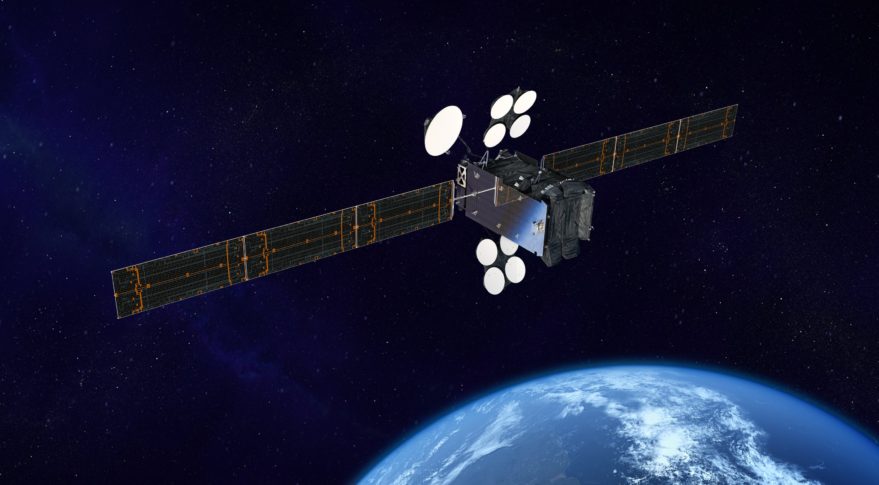SpaceX scheduled to launch an Asia-Pacific communications satellite next week
December 11, 2019 • Evelyn J. Arevalo

Source: Kacific
SpaceX is scheduled to launch the Kacific-1 / JCSAT-18 communications satellite on December 16th, atop a Falcon 9 rocket, from Launch Complex 40 at the Cape Canaveral Air Force Station in Florida. This mission will deploy the satellite into geostationary orbit. Its mass is approximately 6,800 kilograms (14,991 pounds). About eight minutes after liftoff, SpaceX will preform their signature rocket recovery, returning the Falcon 9 booster from space, landing it vertically on an autonomous drone ship at sea named, Of Course I Still Love You (OCISLY).

Source: Kacific
The Kacific-1 / JCSAT-18 is a Boeing made spacecraft, shared between Sky Perfect JSAT Corp. of Japan and Kacific, a startup telecom company headquartered in Singapore. Both companies share the same satellite chassis, half the craft JCSAT-18 will provide mobile services, and the other half Kacific-1 broadband internet services. The satellite aims to provide powerful commercial, high-speed, low-cost, broadband satellite internet and mobile connection to rural and suburban areas, broadcasting signals over the Asia-Pacific region. Kacific said in a statement that this new satellite will "provide the most powerful signal level ever achieved in a commercial satellite in the (Asia-Pacific) region."
Once deployed into geostationary orbit, the satellite will be orbiting at 35,786 kilometers above the equator. The signal of a geostationary satellite always comes from the same location in the sky, therefore only requires a simple antenna, with no moving parts for reception and transmission, offering a more stable service. The Kacific-1 / JCSAT-18 satellite craft will stream broadband to 25 nations in Southeast Asia and in the Pacific islands, most being islands where fiber optics cables are challenging to install, distanced populations and extreme terrain make it difficult to build terrestrial internet stations and antenna structures. Kacific-1 carries 56 Ka-band spot beams. The satellite is designed to provide up to 60 gigabits per second of total throughput. Countries with areas under coverage for the Kacific-1 satellite include: American Samoa, Bhutan, Brunei, Cook Islands, East Timor, Fiji, French Polynesia, Guam, Indonesia, Kiribati, Malaysia, Micronesia, Myanmar, Nepal, New Zealand, Niue, Northern Mariana, Papua New Guinea, Philippines, Samoa, Solomon Islands, Tonga, Tuvalu, and Vanuatu. Kacific stated health care and emergency response services will highly benefit from this satellite's broadband network connection from space.
This launch will mark SpaceX's 77th flight of a Falcon 9 rocket, the 13th mission for SpaceX in 2019, and the 47th recovery landing of an orbital class rocket booster.
Good luck to SpaceX on this upcoming launch!








